WWII Era Landing Craft Infantry & Landing Ship Medium Double-Sided Blueprint Layout Poster
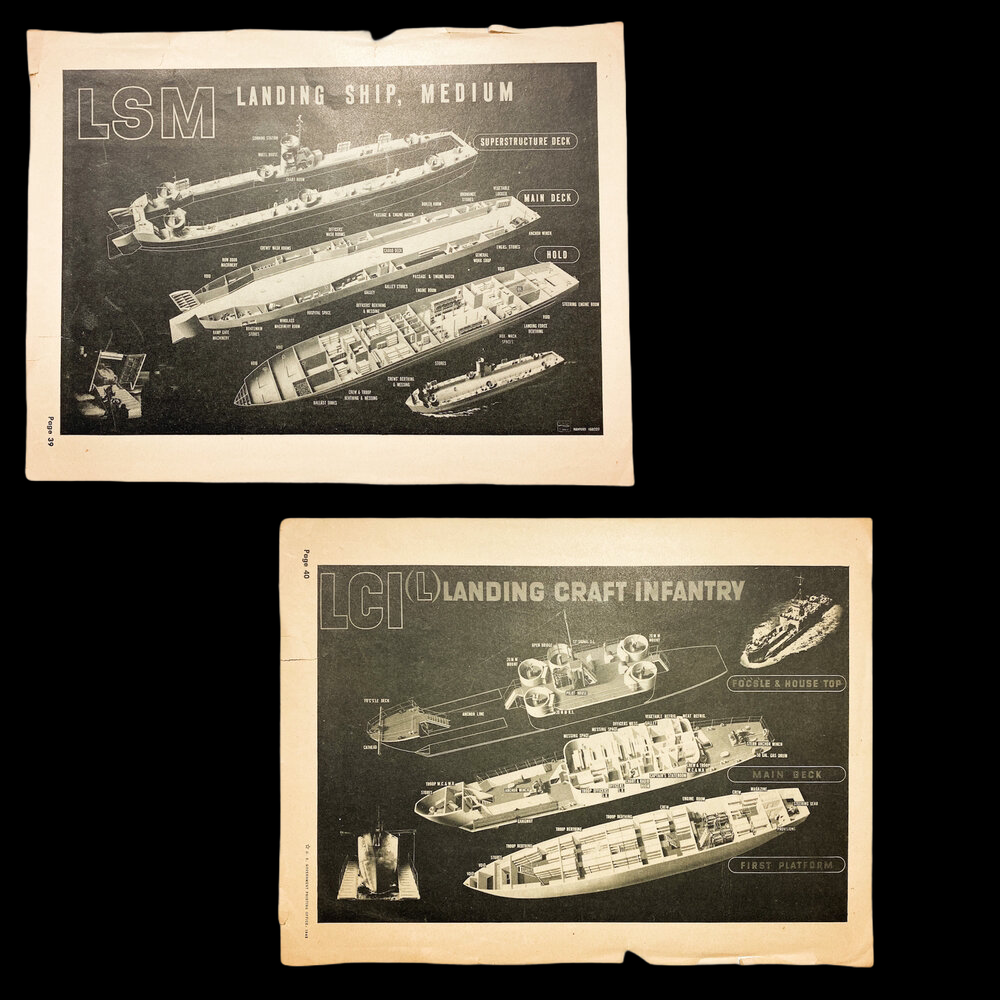

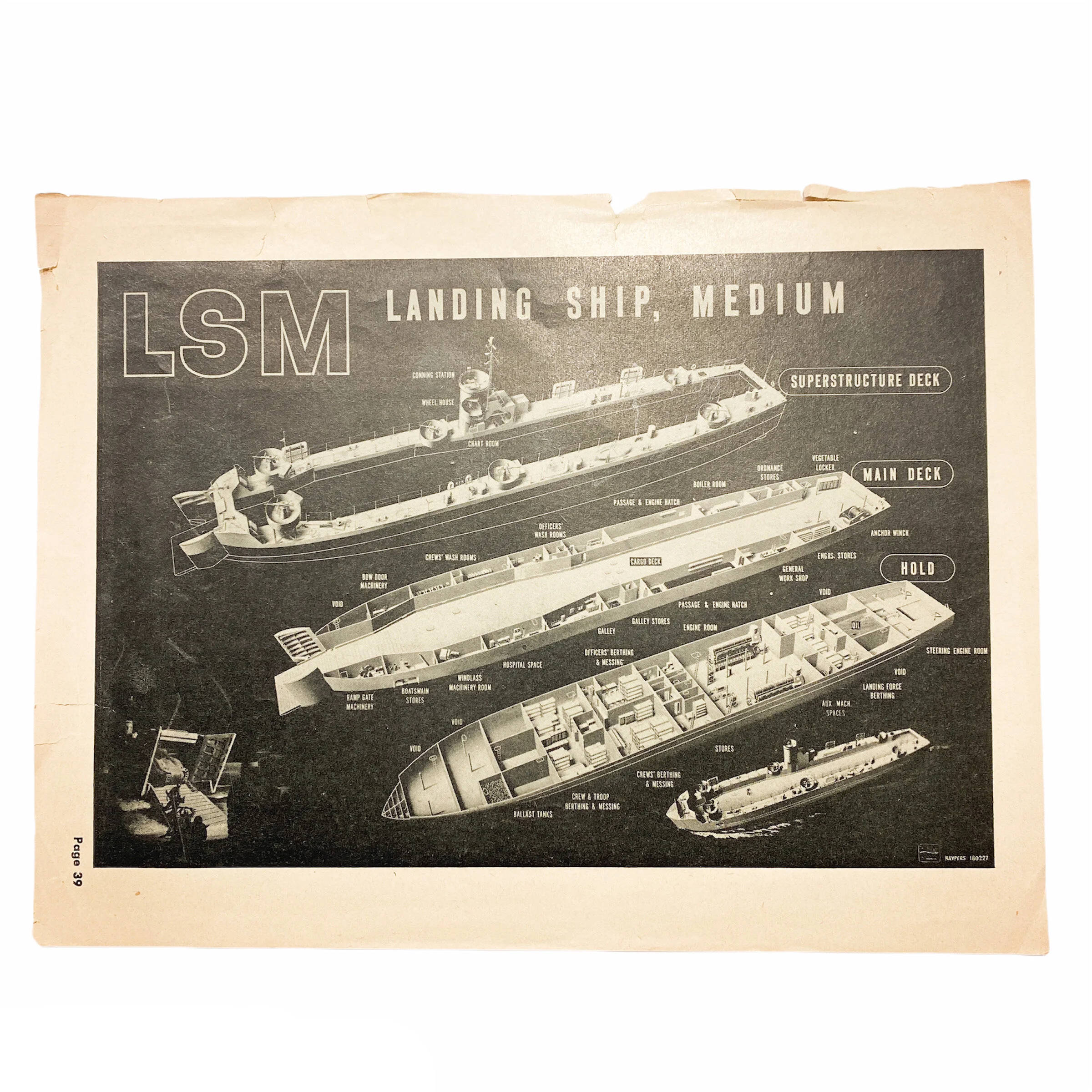
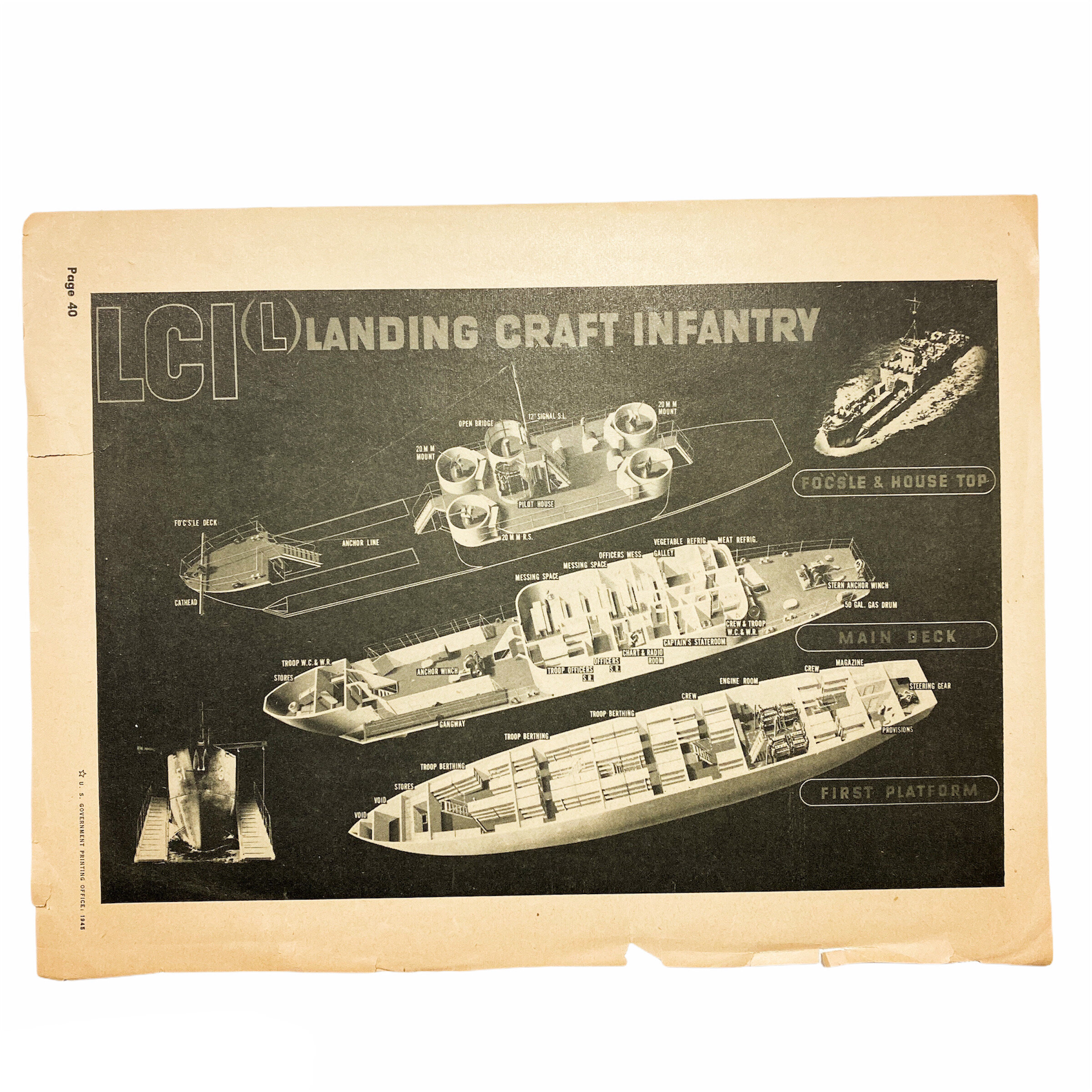
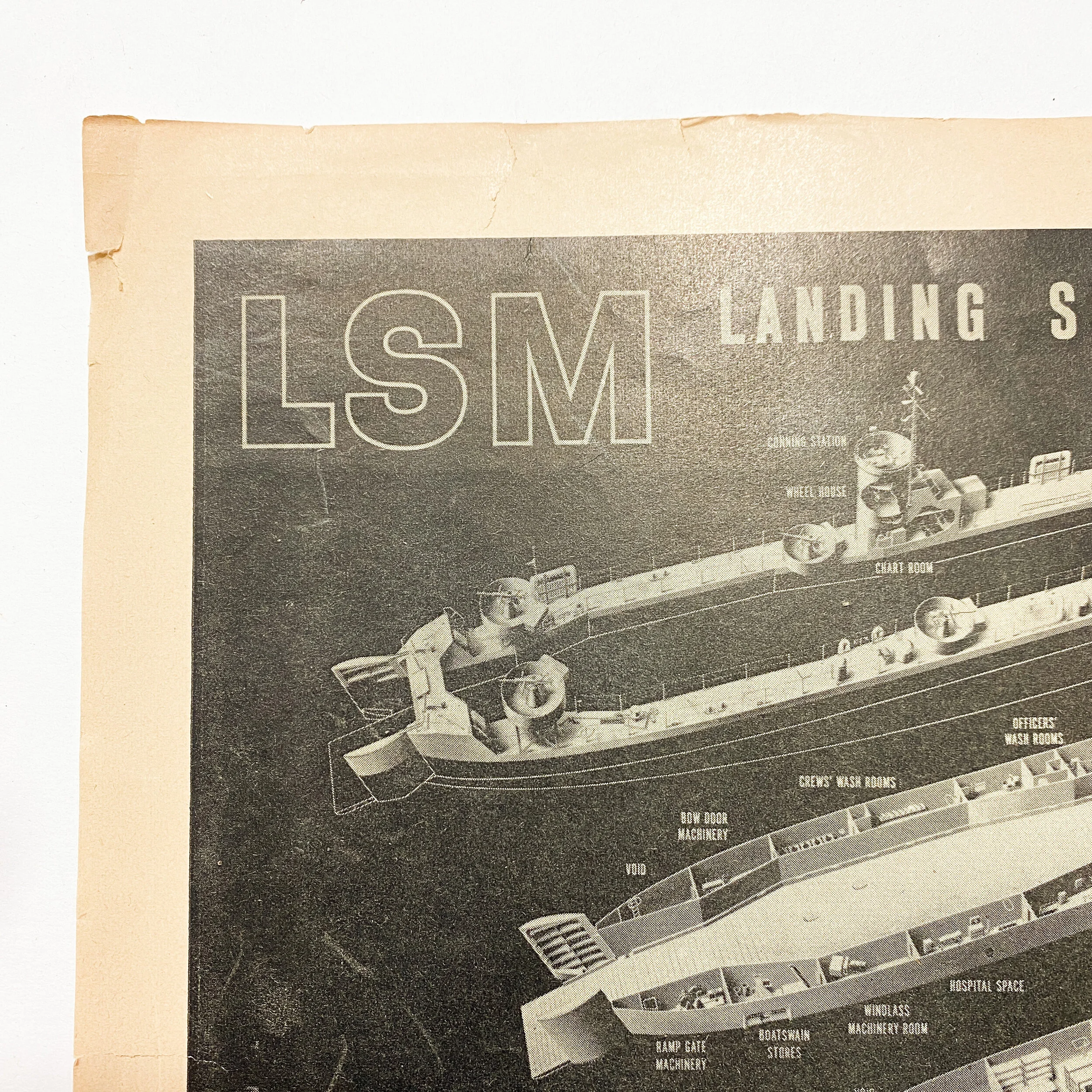

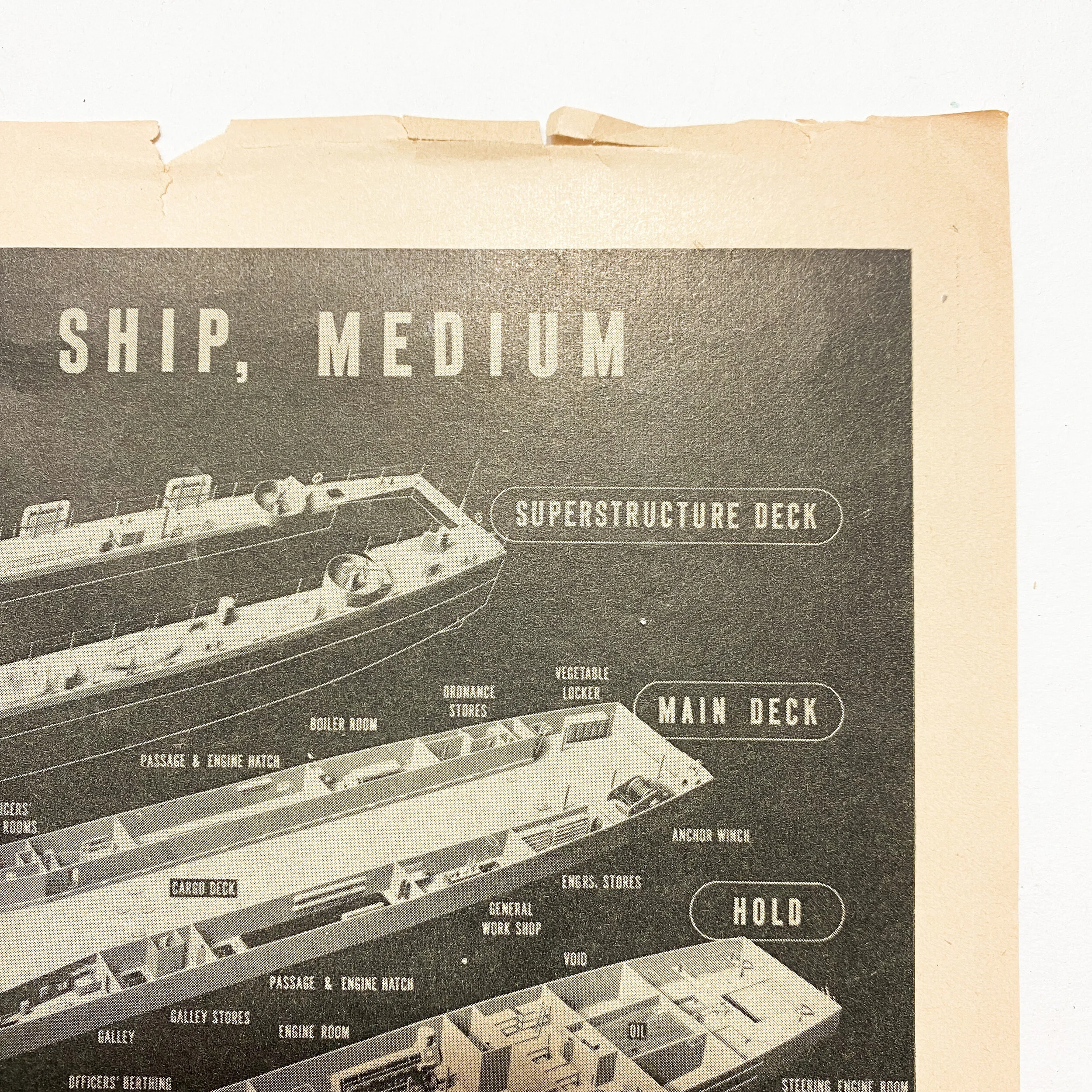




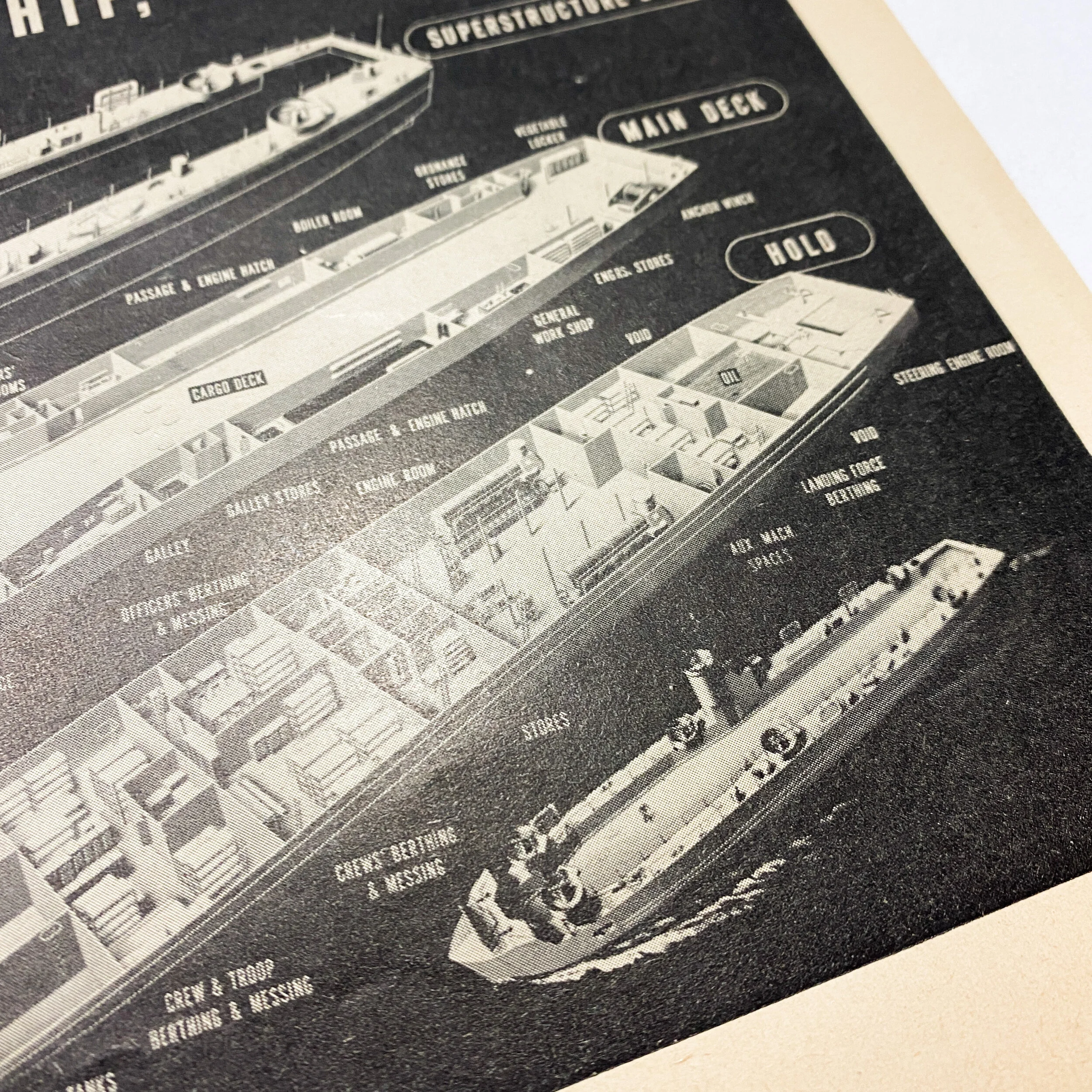
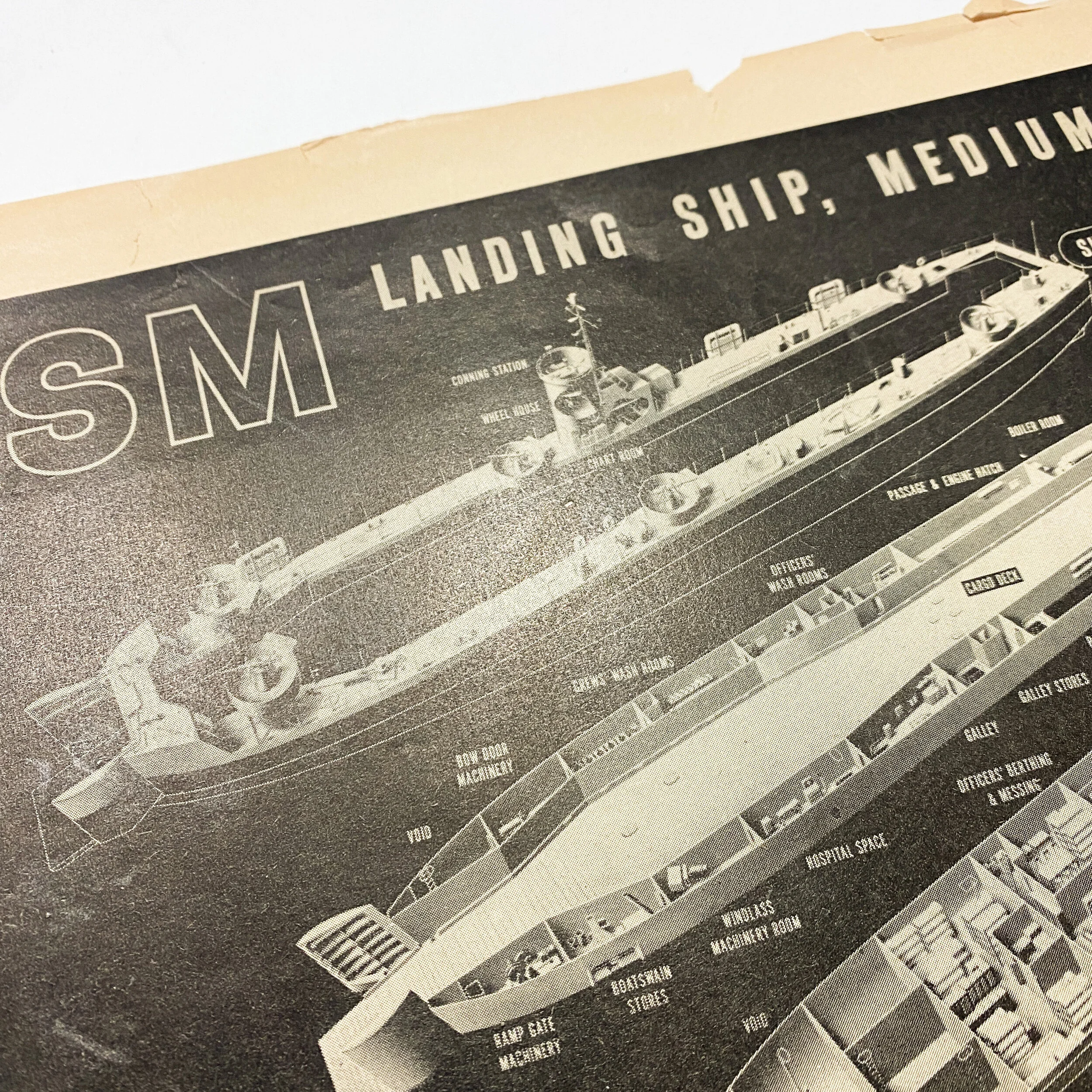
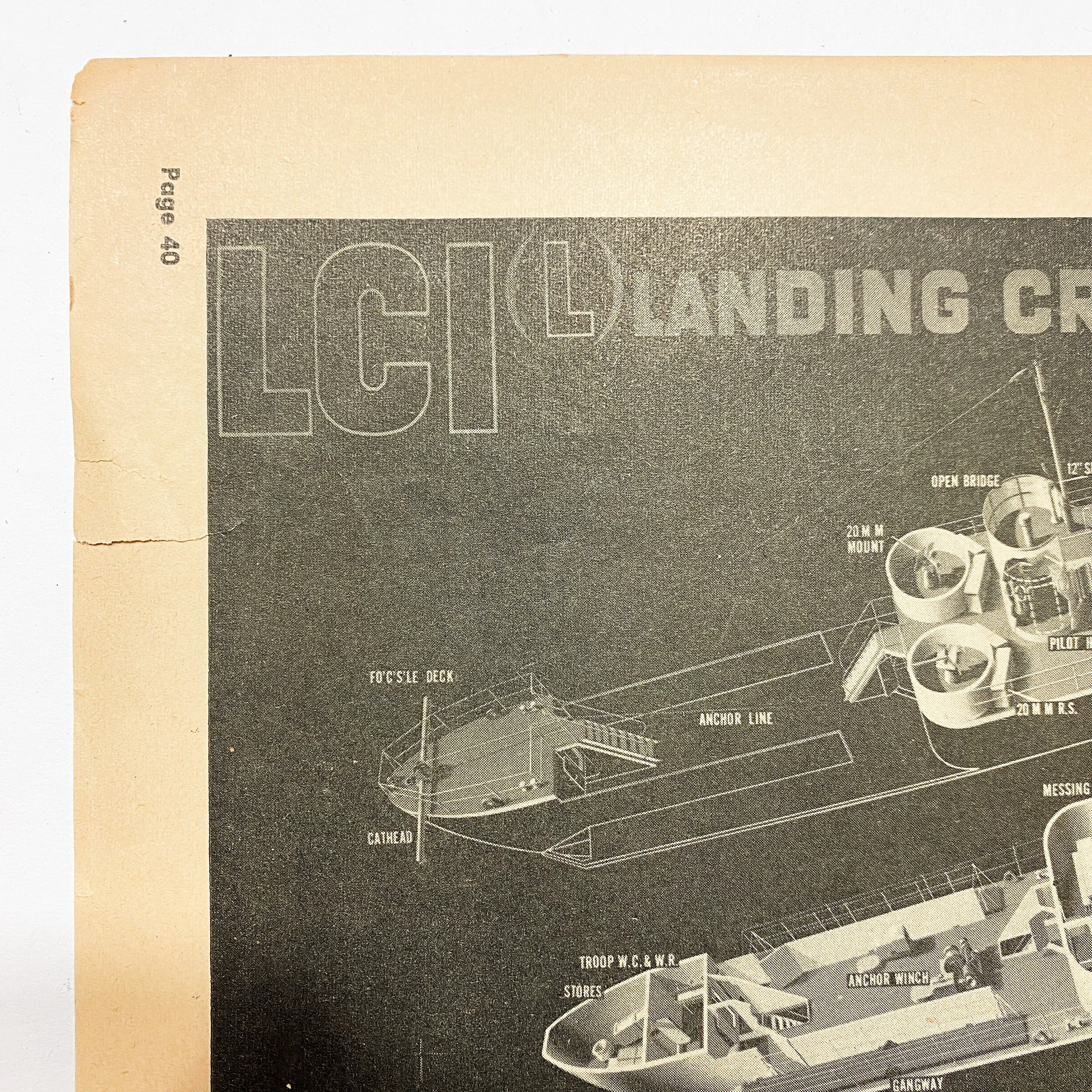
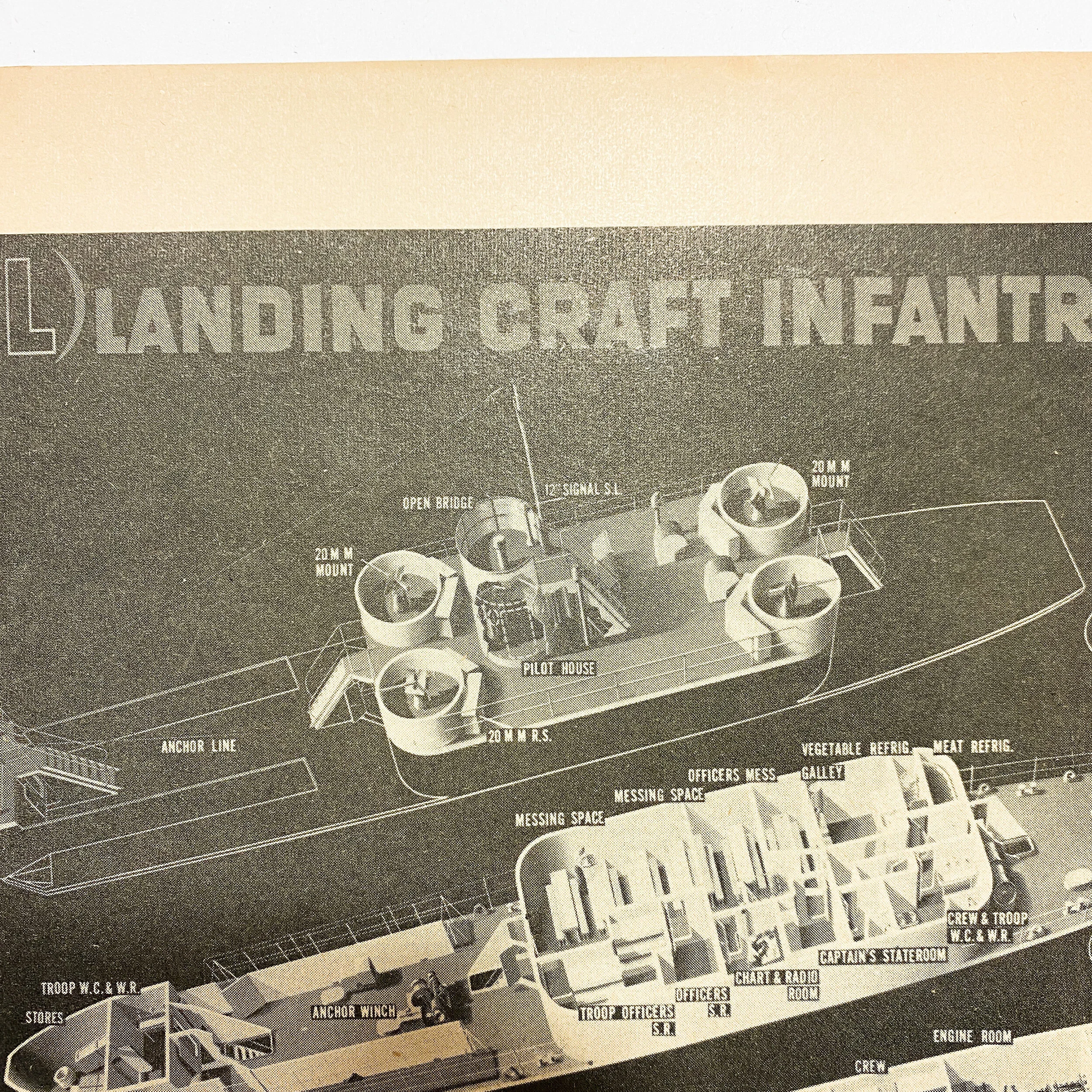
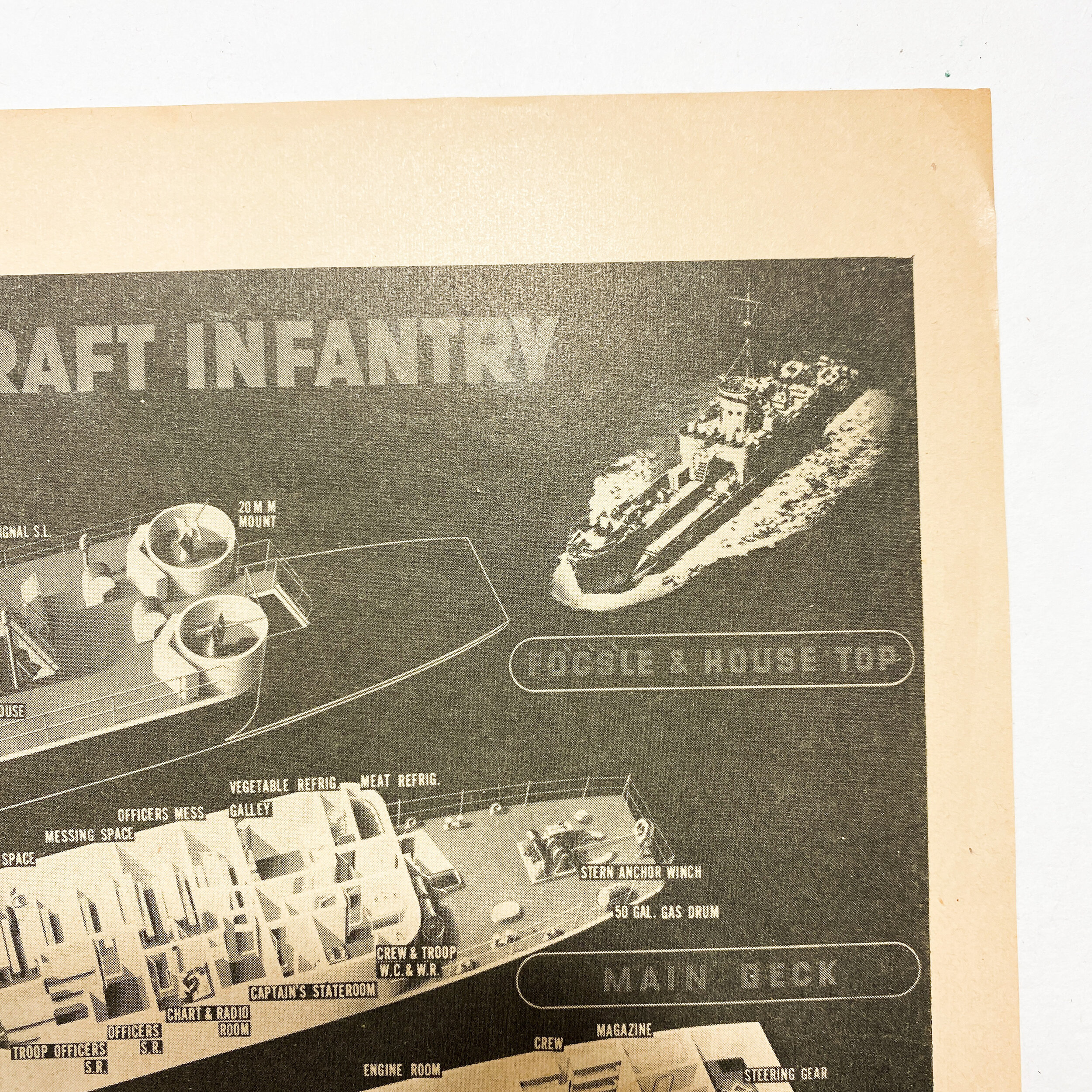
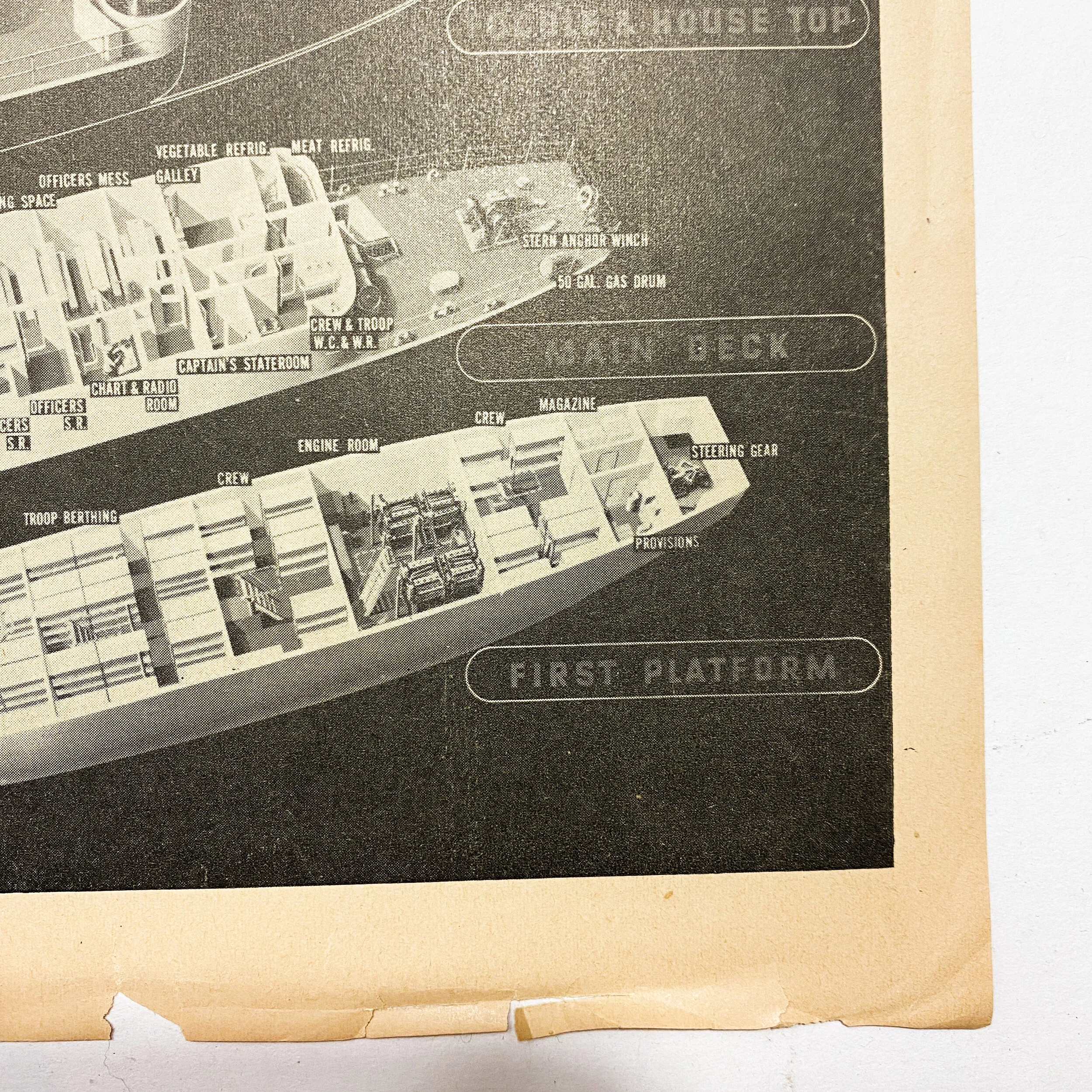

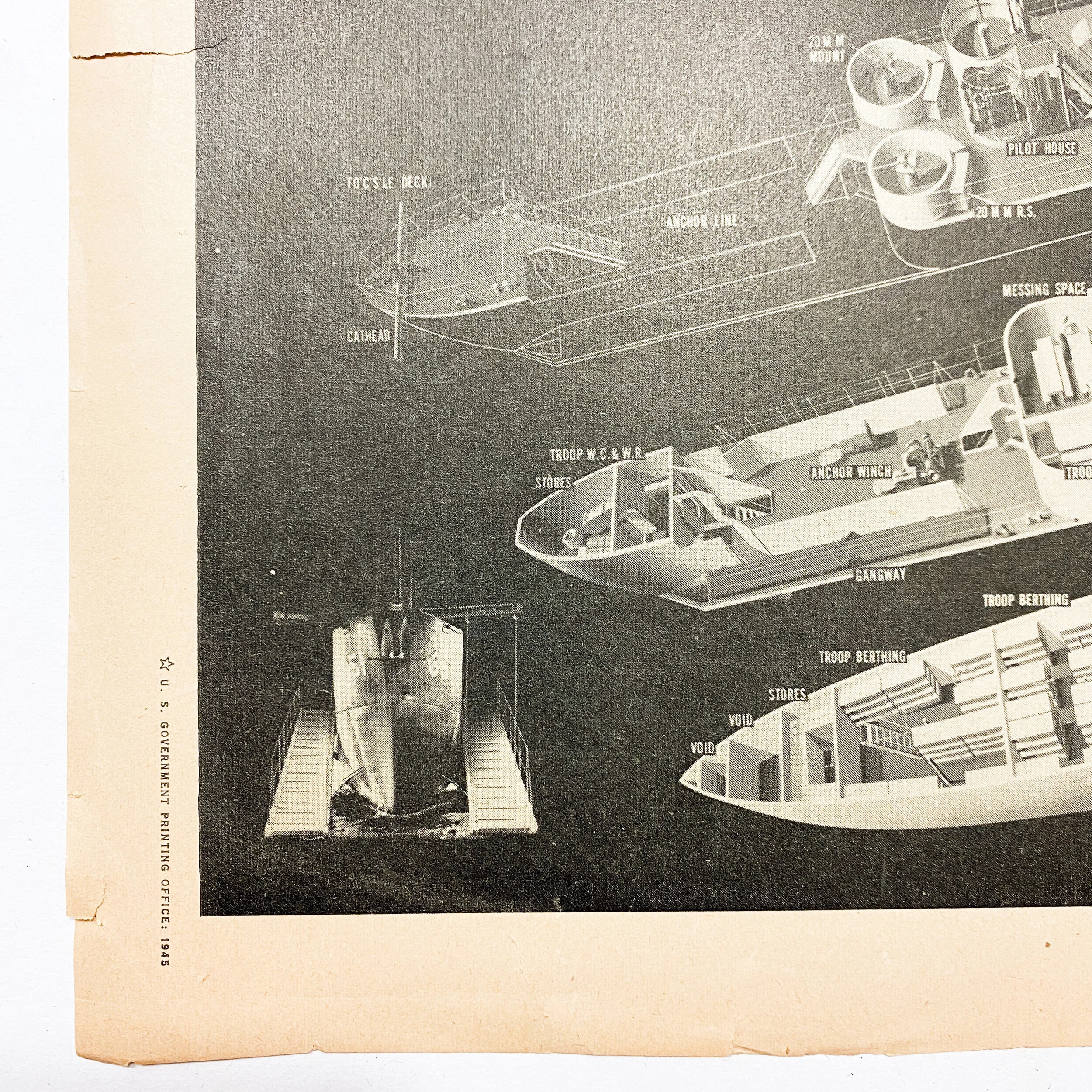
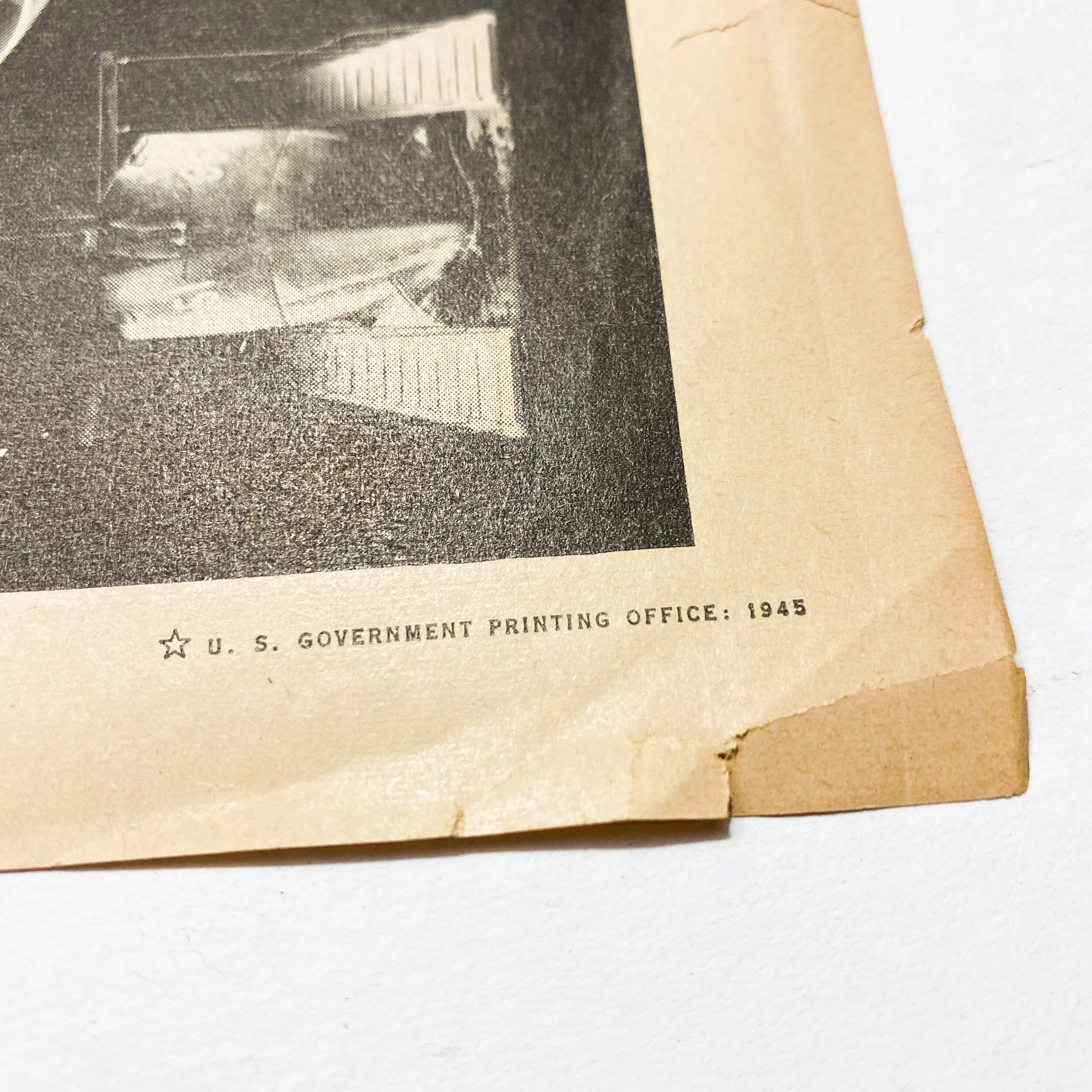
WWII Era Landing Craft Infantry & Landing Ship Medium Double-Sided Blueprint Layout Poster
Size: 10.5 x 8 inches
This double sided heavy printed black and white ink poster shows the infamous WWII L.S.M. or ‘Landing Ship, Medium’ and L.C.I. or ‘Landing Craft Infantry’. While this poster was not a blueprint design in the construction of these Landing crafts used in World War II it was printed by the US Government Printing Office and is dated 1945. These cross and cut sections of these Infamous World War 2 ships were most likely a study tool to learn the basic layout in sections of these modern marvels.
The Landing Craft Infantry (LCI) were several classes of seagoing amphibious assault ships of the Second World War used to land large numbers of infantry directly onto beaches. They were developed in response to a British request for a vessel capable of carrying and landing substantially more troops than their smaller Landing Craft Assault (LCA). The result was a small steel ship that could land 200 men, traveling from rear bases on its own bottom at a speed of up to 15 knots.
Some 923 were built starting in 1943, serving in both the Pacific and European theaters, including a number that were converted into heavily armed beach assault support ships. Commonly called "Elsie Items”, the LCI(L) supplemented the small LCAs/LCVPs as a way to get many troops ashore before a dock could be captured or built. As such, they were the largest dedicated beach-able infantry landing craft (the larger Landing Ship Infantry (LSI) was a transporter for men and small craft such as the British LCA) in the allied inventory.
Landing Ship Medium were amphibious assault ships of the United States Navy in World War II. Of comparable size to Landing Ship, Tank and the Landing Craft Infantry, there were 558 LSM (Landing Ship, Medium) made for the USN between 1944 and 1945. The majority of vessels built on this versatile frame were regular transports however there were several dozen that were converted during construction for specialized roles.